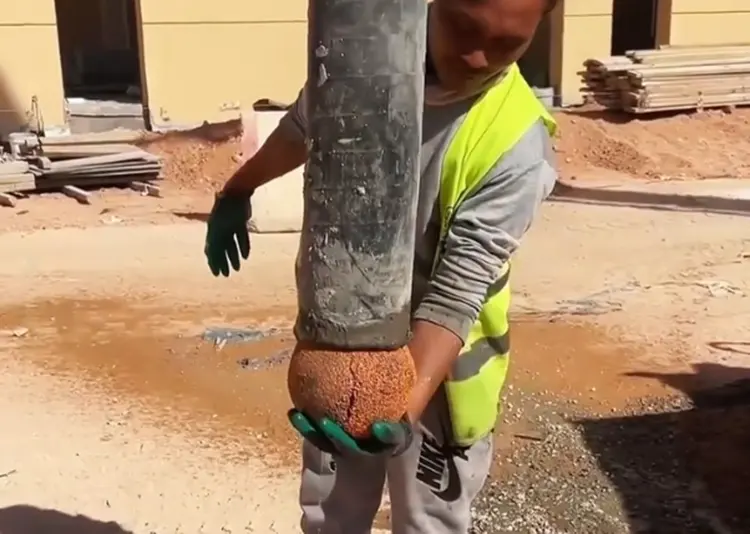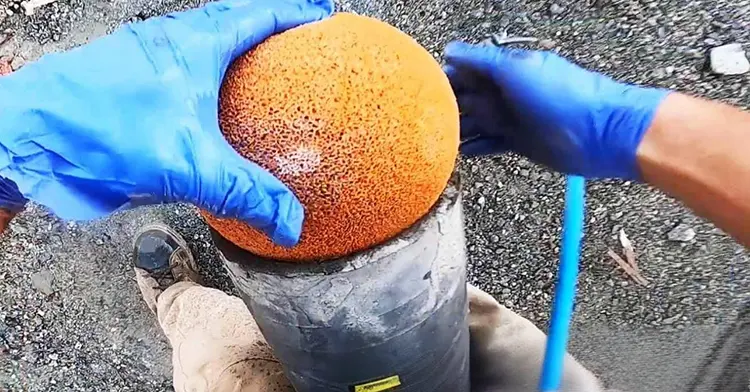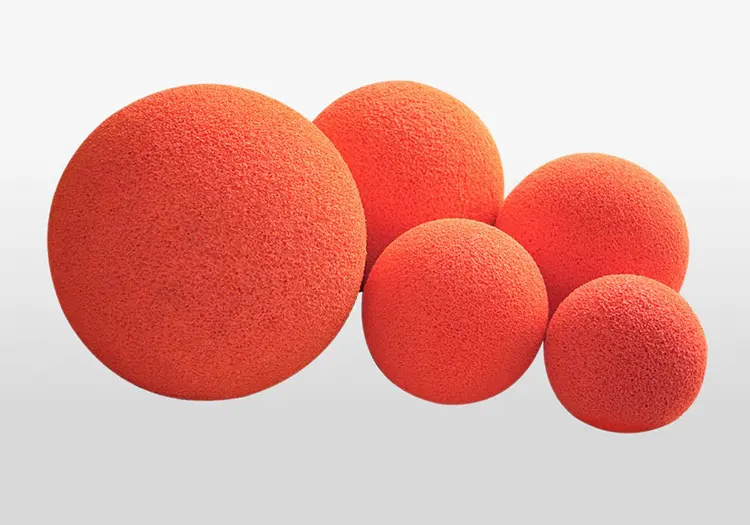I. Introduction
Ever wondered how kilometers-long pipelines stay clean without someone physically scrubbing the inside? I used to think pipe maintenance meant disassembling sections or using heavy chemicals—until I discovered the humble cleaning ball. Also called sponge balls or pigging balls, these simple tools play a massive role in keeping infrastructure running smoothly.
At Kinsoe, I’ve seen firsthand how industries like construction, municipal water, food processing, and oil rely on these soft yet powerful spheres. They silently glide through complex piping systems, cleaning residues, pushing out slurry, and preventing blockages.
In this article, I’ll walk you through what pipeline cleaning balls are, how they work, and why they matter more than most people realize. Trust me, once you understand the science behind the squeeze, you’ll never look at a pipeline the same way again.

II. What Are Pipeline Cleaning Balls?
Pipeline cleaning balls are soft, compressible spheres designed to travel through pipes and clean them from the inside. They’re known by many names—sponge balls, pigging balls, pipe cleaning sponges, foam pigs—but their purpose is the same: to sweep away debris, residue, and build-up.
These balls are typically made of:
- Polyurethane (PU) sponge: Highly durable and widely used for general pipe cleaning.
- Natural rubber sponge: More elastic and eco-friendly, suited for softer cleaning applications.
- Coated variants: Including rubberized coatings for abrasion resistance or abrasive grit coatings for tougher scrubbing tasks.
Each cleaning ball is sized to be slightly larger than the pipe’s inner diameter—usually by about 5–10%—so it compresses and maintains wall contact. They also come in different densities: soft for sensitive applications, medium for general cleaning, and hard for aggressive scrubbing.
III. A Brief History of Pipe Cleaning
The origins of these cleaning balls trace back to the oil industry. The term “pigging” comes from early pipeline devices that made squealing noises while being pushed through pipes—hence, “pigs.”
Over time, the technology evolved. While pigging tools became sophisticated with sensors and brushes, sponge balls gained popularity in sectors like:
- Construction, for cleaning out concrete slurry
- Food and beverage, for gentle residue removal
- Municipal wastewater, for maintaining flow and sanitation
From rugged oil fields to ultra-clean food factories, these balls adapted to fit every industry’s cleanliness standard.

IV. How Do They Work?
Here’s where the science comes in—and it’s fascinating.
Pipeline cleaning balls rely on compression mechanics. Since the ball is slightly oversized, it squeezes as it enters the pipe and forms a seal against the inner wall. This seal ensures consistent friction and contact, which is critical for scrubbing.
Then, fluid dynamics takes over. Water, air, or another pressurized medium pushes the ball forward. As it moves, the compressed sponge expands and contracts, wiping residue away like a rolling sponge mop.
Material matters, too:
- Open-cell sponges absorb fluids and are excellent at trapping particles.
- Closed-cell sponges resist absorption, offering better abrasion for sticky or hardened deposits.
Each material choice represents a trade-off between absorbency and abrasion resistance—two factors I always weigh when recommending the right ball for a customer.
“It’s not just about pushing a ball through a pipe. It’s engineering in motion—pressure, material science, and geometry working together.”
V. Why Use Cleaning Balls?
Cleaning balls aren’t one-size-fits-all. Their applications are as diverse as the industries that use them. Here are some key examples:
- Concrete pipelines: After casting, these balls remove leftover cement slurry before it hardens.
- Municipal and industrial pipelines: Routine cleaning prevents blockages and bacterial growth.
- Oil & chemical lines: They help clear buildup to maintain optimal flow rates.
- Food-grade stainless pipes: Soft-density sponge balls gently clean without damaging the finish.
- Inspection prep: Before a CCTV inspection or pressure test, a run-through with sponge balls ensures clean, debris-free visuals.
The core benefit? They clean without chemicals, disassembly, or downtime. It’s simple, fast, and highly effective.
VI. Real-World Applications and Case Studies
Let me share a few real scenarios where I’ve seen these cleaning balls work wonders:
- Construction site handover: A contractor used our PU sponge balls to clean several hundred meters of concrete drainage pipe before final inspection. The balls removed all excess slurry in two passes—saving time and cleanup labor.
- Sewage plant maintenance: A municipal wastewater plant schedules sponge ball cleaning every three months. It’s part of their preventive maintenance strategy and has dramatically reduced emergency blockages.
- Food syrup processing line: At a sugar factory, soft sponge balls are used to wipe syrup residues from stainless steel pipes at the end of each production cycle, maintaining hygiene without scratching the interior.
These use cases show just how adaptable and vital these simple tools are.
VII. Conclusion
Pipeline cleaning balls may look like toys, but they perform a serious job behind the scenes of every fluid-moving industry. They keep infrastructure clean, systems efficient, and maintenance costs low.
At Kinsoe, I’ve supplied countless clients with custom sponge balls tailored to their applications—from soft food-grade wipes to abrasive-coated scrubbing tools for concrete and sludge. And I’m always amazed by how such a simple product can deliver such powerful results.
In a world where flow matters, sometimes it’s the simplest tools that keep everything moving.


